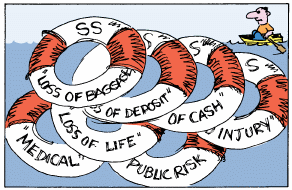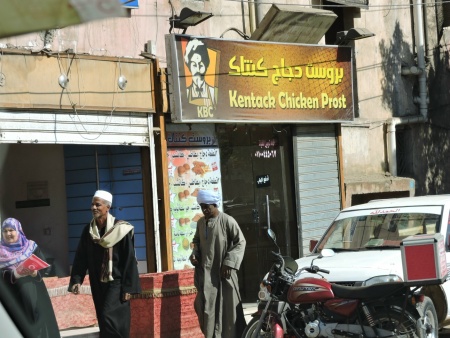
|

The national business names registration system gives a business owner little protection against a competitor who copies their business name. The reason for the lack of protection lies in the limitations in the law - the Business Names Registration Act 2011 (Cth) (the Act) and the Business Names Registration (Availability of Names) Determination 2015 (the Determination). Added to this are the inconsistent decisions of the Administrative Appeals Tribunal of Australia in deciding whether or not two names are identical (or nearly identical). It is only by using the Australian Consumer Law that some protection can obtained. This article
looks at these systemic failures, and ways to address them.
This is followed by marketing commentary by Michael Field on
the value of a checking business name availability. The Business Names Registration rules – Is the same name already registered? Since 3 November 2011, business names in Australia have been recorded on the National Business Names Register. The Register is administered by the Australian Securities & Investments Commission (ASIC). All state registered business names have been migrated on to the national register. Section 25 of the Act sets out these rules for name availability: A business name is available
to an entity if:
The Determination (updated in 2015) sets out - Rules for determining whether business names are identical or nearly identical to other names – to be used when an application is made for registration of a name. ASIC has a guide to the rules - Business name availability tests. This is a brief summary of the rules used for determining if a name can be registered:
If ASIC does register an identical or nearly identical name, the procedure that the owner of a business name needs to follow to challenge the registration is to request ASIC to review the decision. If ASIC does not agree to deregister the copycat
name, then appeal lies to the Administrative Appeals
Tribunal. Administrative Appeals Tribunal decisions on business name challenges There have been five Tribunal decisions dealing with identical or nearly identical names since the national register began. In each, ASIC took the inflexible position that the rules in the Determination must be strictly followed – especially Schedule 1 which contains the list of items to be taken to be the same. These are the case summaries:
The inconsistency between these decisions can be explained by the fact that some Tribunal Members agree with ASIC and take a literal / objective approach to the law, while others look at ‘the potential confusion created in the minds of the persons who might be expected to deal with the respective entities’, and consider that ASIC should exercise its discretion where the Determination does not strictly apply. It will take an appeal to the Federal Court
of Australia to resolve the inconsistency. What other options does a business have to protect its trading name? Business owners should start with self-help - which means registering all variations of their trading name as a company name or a business name. Then, the business owner needs to register a domain name for each of those names, and a trade mark with those names (with or without a logo). If a competitor succeeds in passing the ASIC business name availability tests, an appeal to the Administrative Appeals Tribunal is a relatively inexpensive option, if the Determination applies. But often, a more direct approach is needed to bar the competitor from using the name. In that case, an application needs to be made to the Federal Court of Australia for orders under the Australian Consumer Law (Competition and Consumer Act 2010 (Cth), Sch 2). This is a case study: Sydney Medical Service Co-operative Limited v Lakemba Medical Services Pty Ltd [2016] FCA 763 Sydney Medical Service has traded under the name Sydney Medical Service since at least 1971. It provides an after-hours medical service and home visits throughout the entire Sydney metropolitan region and Wollondilly. In 2014-15 it provided 76,885 services. It has distributed promotional material widely to 848,489 residences throughout Sydney in the past 2 years. Lakemba Medical Services registered the business name Sydney Medical Services 2020 in late 2015 and commenced to trade under that name in 2016. It provides an after-hours medical service in the Lakemba region. The Court (Flick J) found that Lakemba Medical Services had contravened section 18 of the Australian Consumer Law (misleading or deceptive conduct) and also section 29(1)(h) of the Australian Consumer Law (a representation that it is affiliated) by using a similar name to provide similar services in geographical areas which overlapped. Also the Lakemba Medical Services website contained similar statements about the services it provided. The Court
ordered that Lakemba Medical Services be
restrained from using the name, and ordered it
to remove the name from its premises and motor
vehicle, its websites and its email accounts
within 7 days. As a footnote, Sydney Medical
Service is pursuing enforcement and contempt
orders because Lakemba Medical Services has
failed to comply with these orders. Summary The temptation for a competitor who is starting up their business to copycat the name of an established business will often prove irresistible. When that happens, it is worth checking whether the ASIC business name availability filters should have prevented the registration of the copycat name. If so, an appeal is worthwhile. Where, as in the Sydney Medical
Services case, the addition of ‘2020’ to the
name successfully circumvented the ASIC filters,
then the Australian Consumer Law provides
a suitable platform to stop the use of the
copycat name. Marketing Perspective by Michael Field – EvettField Partners Business name registration and protection is a serious and ongoing issue for startup, small and medium enterprises. Startups and small businesses often overlook basics such as business name search and registration, securing domain names or researching trade mark availability. It is often not intentional, but rather due to limited resources or a lack of focus as they are excited and distracted by the new idea or the size of the opportunity. Medium-sized enterprises are generally better resourced. New business and product ideas are often developed in-house by the brand, marketing or product team. As such, there are not always well-established processes for protection of that intellectual property. Large enterprises generally have dedicated, specialist resources and established processes to manage the identification, registration and protection of business names, domain names and other intellectual property such as trade marks. As strategy consultants for medium-sized B2B organisations, we have been engaged on a number of rescue missions to rebrand a business or product after many months and tens of thousands of dollars had already been invested in developing a business name or brand that simply was not available. The costs associated with researching and redeveloping an alternate business name, new logos, websites, packaging, point-of-sale and collateral can run into the tens or even hundreds of thousands of dollars. This calculation does not include lost time, wages, opportunity cost and the very real potential for reputational damage. Our advice is that before any marketing funds are invested in developing a business name or brand, there are three simple (and free) searches that should be conducted in-house before any new business name is decided. These are:
Once you have developed a shortlist of preferred names, engage the services of a legal professional to help you navigate through the minefield of business name registration and protection, especially trade mark protection. A separate entity to hold the name might be recommended for asset protection purposes. The relatively small cost of engaging a legal professional can potentially save hundreds of thousands of dollars on work that may be lost if the preferred name is unavailable or later contested. It also has the potential to save unanticipated legal fees if the business or product name is opposed. It is always exciting to think of new
product ideas, brand extensions or
complimentary business services, but failing
to conduct basic checks for availability is
costly and can destroy a business reputation
before it is even launched. |
|||||||||||||||||||||||||||||||||||
|
© Copyright 2022 Cordato Partners |
||||||||||||||||||||||||||||||||||||
